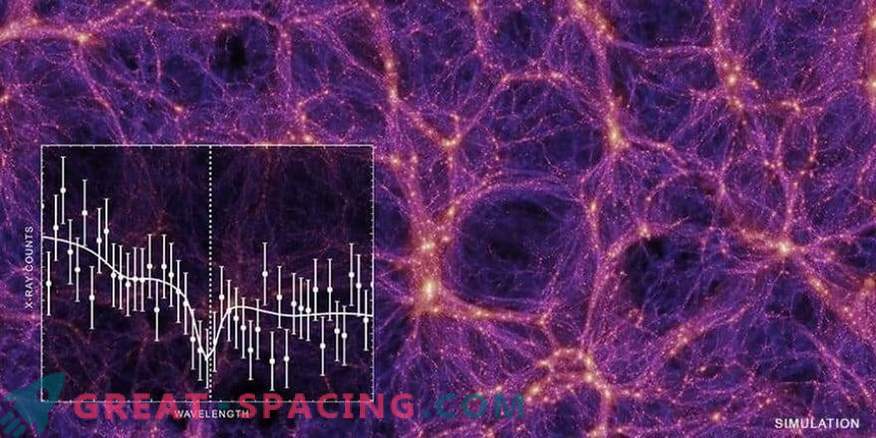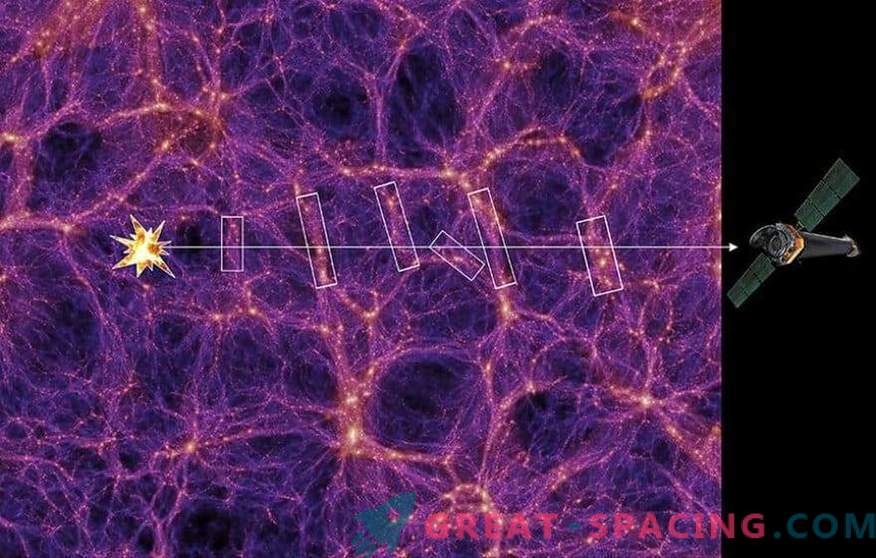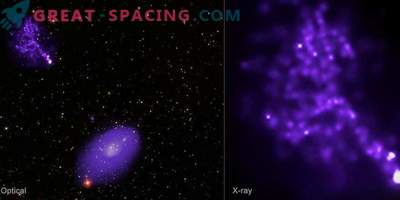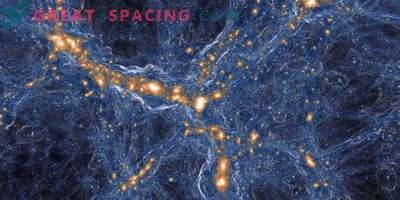
Scientists spent dozens of years searching for about a third of the “normal” matter of the Universe. New data from the Chandra X-ray Observatory may finally provide a welcome response.
Detailed reviews, analyzes and calculations allowed the researchers to understand how much normal matter (hydrogen, helium and other elements) existed right away from the Big Bang. In the interval from the first minutes to a billion years, most of the normal matter was in cosmic dust, gas and objects (stars and planets).
That's just a problem. If we add up the mass of all normal matter in the modern space, then the third part falls somewhere (it differs from the no less mysterious dark matter).
One theory suggests that the missing mass is grouped into large-scale strands of warm (less than 100,000 K) and hot (more than 100,000 K) gas in the intergalactic space. These filaments are called the “warm-hot intergalactic medium” (WHIM). They are not shown in optical surveys, but some of the warm gas is visible in ultraviolet light. With the help of new technology we managed to find convincing evidence of the existence of WHIM. Astronomers used the Chandra Observatory to find and study the threads of warm gas located along the path to the quasar (a bright X-ray source) that feeds a rapidly expanding supermassive black hole. Quasar removed by 3.5 billion light years from us.
If the hot gas component of the WHIM is bound to these strands, some of the X-rays of the quasar will be absorbed by this hot gas. Therefore, scientists have tried to find the signature of a hot gas printed in a X-ray light of a quasar.

Light path
But the problem is that the WHIM absorption signal is weak compared to the total X-ray radiation of a quasar. Because of this, when searching for the entire X-ray spectrum at different wavelengths, it is difficult to distinguish the weak WHIM characteristics from random fluctuations.
But the team managed to solve the problem by focusing only on certain parts of the X-ray spectrum, reducing the likelihood of false positives. First, they identified the galaxies near the line of sight to the quasar, located at the same distance from the Earth as the areas of warm gas. Thus, we managed to find 17 possible threads between the quasar and our planet, setting their distances. The universe expansion stretches the light as it travels, so any X-ray absorption in these filaments will be shifted to a more red wavelength. Narrowing the search turned out to be incredibly useful, but I also had to struggle with the weakness of X-ray absorption.
The method made it possible to detect oxygen with characteristics hinting at its presence in a gas with a temperature of a million Kelvin. Extrapolating these data helped to account for the total amount of missing matter. In the future, they plan to apply the technique to other quasars in order to confirm the theory about WHIM.











































